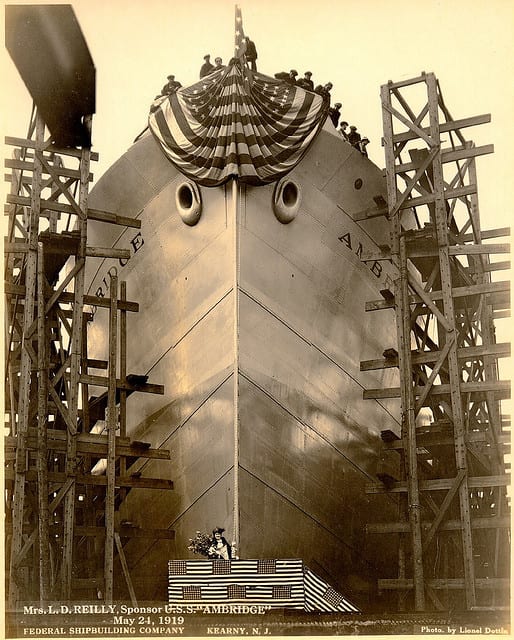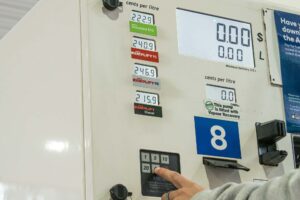Six years after being elected for the first time, the Rudd government will not be able to go to the next poll with pretty pictures of politicians standing next to large solar farms they have caused to be built. But they will have a photo of one of their ministers holding a cheque, albeit a bigger cheque than first envisaged.
Four years after the first announcement of the Rudd government’s grand Solar Flagships program, newly appointed Climate Change Minister Mark Butler was on hand on Wednesday to announce that the government and AGL Energy had finally reached financial close on what will be Australia’s biggest solar project.
The 155MW solar PV farm – equivalent to the size of 185 Sydney Cricket Grounds, or covering an area including Sydney’s CBD and North Sydney with 2 million modules – will begin construction at Nyngan and Broken Hill in stages next year, and will be complete by the end of 2015.
However, the government has agreed to inject an extra $37 million into the $450 million project, lifting the contribution from the Australian Renewable Energy Agency to $166.7 million from $129.7 million. A further $64.9 million in funding – previously announced – will come from the NSW Government, while another $40 million will be invested through the Education Infrastructure Fund to support one of the world’s largest solar research projects to be undertaken by the universities of Queensland and NSW.
Even though solar PV costs have fallen in the last two years, AGL Energy said the extra funds were required because of a fall in the wholesale price of electricity in Australia – caused by overcapacity and reduced demand (caused in turn by the growth of rooftop solar).
However, in a sign of the innovation that is now being introduced into such financing, ARENA has agreed to stump up the extra money to reduce AGL Energy’s risk, but will claw back its contribution if wholesale prices actually rise above an agreed rate. Its potential clawback is equivalent to its entire commitment. It effectively prevents AGL Energy making off with any bonus gains from government funds, but provides it with the certainty to go ahead with the project.
Butler admitted that the project had taken a long time to move to reality, but it was important as solar projects of this size had been the “missing link” in Australia’s clean energy puzzle.
“This is a really exciting milestone on a long, long journey to a clean energy future,” Butler said. “It has taken a long time, but the scale of it is awesome.” He said he believed that Australia would meet its 20 per cent renewable energy target “quite comfortably” by 2020, and it was crucial for Australia to be a leader in clean energy, particularly with the likes of China committing to spending more than $300 billion on clean energy in the next five years.
NSW Energy Minister Chris Hartcher also said the (conservative) NSW government remained committed to the 20 per cent target.
AGL Energy managing director Michael Fraser said NSW stood to attract $5 billion in renewable energy projects over the next 7 years, and said it was “Undoubtedly a key milestone for the renewable energy industry in Australia.” He said later that AGL was looking at other solar projects, including in combination with wind farm projects.
ARENA CEO Ivor Frischknecht said: “This is a first of a kind project in Australia and it will catalyse change in Australia’s energy landscape, showing that we can do it (build large scale solar).
“Solar energy at utility scale is reliable and can provide investors with returns they need,” he said, adding that the project would also display how valuable solar energy is, and could be more valuable than wind energy.
The next solar project, he said, would happen more quickly and more cheaply. ARENA also expects to make decisions on smaller solar farm projects proposed by Infigen Energy and Pacific Hydro in the next six months.
Paul Meredith, from UQ, described it as a “significant day for solar in this country and for developing the core competency” in the technology. “We been waiting an extremely long time,” he said.
Indeed, the time theme was repeated by all concerned. The ill-feted flagships program– announced by Rudd in 2009 – were followed by the allocation of funding to the 150MW Moree project in 2011. But that funding was withdrawn after Moree failed to gain a power purchase agreement.
Construction of the 102MW Nyngan component is expected to commence in January 2014, with completion scheduled by mid 2015, and construction of the 53MW Broken Hill component will start approximately six months later, in July 2014, and is scheduled to be completed around November 2015.
It might have been built earlier but AGL Energy decided that it would need to form a queue with its other renewable developments, having regard to its need for renewable energy certificates. And, as it turned out, the financing had to be re-callibrated to deal with falling wholeale prices. This is an issue that will affect many other projects on a similar scale.
The Nyngan solar farm is by far the largest in Australia – as its only competition was the recently completed 10MW Greenough River project. It is also being touted as the largest in the southern hemisphere, although it will likely be rapidly overtaken by projects elsewhere, particularly in Chile, where numerous large projects are in development, including the 162MW Luz del Norte project, also to be built by First Solar. That project is proceeding without government subsidies, courtesy of the high wholesale cost of energy – and energy shortages – in that country
First Solar, the US solar giant, has become a specialist in large solar farms – it is also building the 250MW AVSR in central California, and the 550MW Topaz facility near San Luis Obispo, also in California.
First Solar also built the Greenough River solar plant, which used from the WA Government owned Verve Energy and GE, and which has been performing ahead of expectations. As in that plant, it will source its modules from its manufacturing plant in Malaysia. Construction of a 20MW solar PV plant to be built by Spanish group FRV under the ACT government’s solar auction program should begin this year, while numerous other projects, such as the Sunshine Coast’s 10MW solar PV project could also get the go-ahead.
Even with all this, Australia would still not rank in the top 10 of solar countries with utility scale solar. South Africa, for instance, is the process of building nearly 1,000MW of solar PV as a result of its recent auction processes, as well as more than 400MW of solar thermal. The US has more than 6,000MW in the pipeline and Saudi Arabia has committed 42,000MW to be built in coming decades, as it uses solar to provide cheaper electricity at home, and use more of its petroleum resources for export.








